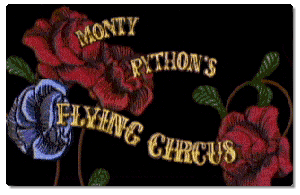


Sam Archer as Mr Lockwood, the character opening and closing the story, and as Edgar Linton gives us terrific character acting. Each is named and chalked up on a blackboard and paraded across the stage. Off into the chaos.ĭeath abounds, whether through childbirth, alcoholism or plain despair, each death accompanied by a doctor, played with bleak humour by Craig Johnson. They are almost singing a twelve-step programme – one sip and into the abyss. The Moor (mother nature) befriends and tries to advise the human characters, offering emotional support – as when Cathy’s brother Hindley hits the bottle after his wife Frances dies in childbirth. “Real” trees are stacks of chairs, dogs are snapping jawbones on scythes, and birds flapping pages of books held aloft on poles - all against gently moving film of grey Yorkshire clouded sky. The Leader of The Moor (a terrific Nandi Bhebhe) in a hat of ferns, sticks and feathers, calls on the audience to “Concentrate…no-one said this was going to be easy.” And so the complications of family ties are dealt with at the beginning, as a performed family tree.

Rice replaces Bronte’s servant narrator, Nelly, with a personified moor, a troupe acting, dancing and singing like a Greek chorus as they unspool the tragedies of the Earnshaws and the Lintons. So, no longer intoxicated by impossible passions… I saw a story not of romance but of brutality, cruelty and revenge.”įrom this more insightful perspective, Rice and her company Wise Children’s Wuthering Heights is a marvel of ensemble playing, where actors, on-stage musicians, Ian Ross’s music and Vicki Mortimer’s set (an installation of moving parts) are in high-energy harmony. After visiting a refugee camp, she writes in the programme: “Wasn’t Heathcliff an unaccompanied child refugee taken in by Mr Earnshaw?. It’s been a set book on the English National Curriculum and the subject of many essays, my favourite by Andrea Dworkin claiming that the whole thing represents “bad emotional health.” And so it does.ĭirector Emma Rice gets this entirely.
#Monty python wuthering heights in semaphor tv#
This enduring classic has been adapted for movies, TV series, put to song by Kate Bush and satire by Monty Python, with soulmates Cathy and Heathcliff communicating with semaphore flags across the moor. It is moorish, wild, and knotty as a root of heath.” And so are the family dynamics. As importantly, Stoneman analyses what the various adaptations reveal of the societies which produced them, so preventing her study, on the whole, from.CHARLOTTE BRONTE said of her sister Emily’s book “Wuthering Heights is rustic all through. She explores the way in which these two classic texts - and their authors' lives - have become what she calls common cultural property, and traces the development of the Bronte legend.īut her work is more than an annotated bibliography. Bronte Transformations is a chronological survey of the myriad dramatic, cinematic, televisual, musical, operatic, and balletic interpretations of Jane Eyre and Wuthering Heights since the 1840s, of illustrations to printed texts, of reworkings, parodies, and sequels. What metamorphosis, then, lies between the early Victorian novels, and their twentieth-century treatment by Kate Bush and Cliff Richard? It is this question which Patsy Stoneman answers. But of the seven novels which make up the Bronte canon, only one of them significantly incorporates all these components. `Brontesque': the word has become synonymous with images of windswept moors, of passion, of elemental power.


 0 kommentar(er)
0 kommentar(er)
